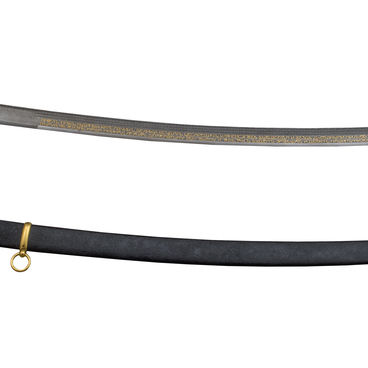The need to improve the models of cold weapons used in the Imperial Russian Army arose in the mid-19th century. The main disadvantages of this type of weapon were the rather large weight, massiveness and inconvenience of the hilts, as well as the unsatisfactory balancing of the blades.
Metal scabbards were quite widespread. Due to their weight and noise when carrying weapons, they caused great inconvenience to soldiers and officers. Major General Alexander Pavlovich Gorlov played a significant role in the development of new models of standard-issue cold weapons. In 1880, he submitted new variants of cold weapons for introduction into the Russian army to a Special Commission under the Main Committee on the Organization and Formation of Troops.
After making constructive improvements, on April 8, 1881, the emperor approved new models of dragoon and Cossack shashkas, as well as the cuirassier broadsword. The dragoon soldier’s shashka of the 1881 model had a steel, slightly curved single-edged blade with one wide fuller. The tip was double-edged. This blade design made it possible to deliver powerful slashing blows, and the double-edged tip improved the effectiveness of stabbing blows.
The grip of the hilt was not covered with leather and wire, as in previous models, and was made of wood to make it easier to hold the shashka. The scabbard was made mainly of birch and covered with leather (from 1891 to 1901, the scabbard for cavalry units was covered with rubber). Wood as the main material for the scabbard reduced its weight, and also almost eliminated the “saber-rattling”, which previously irritated soldiers during marches.
The main manufacturer of the new shashkas was the
famous Zlatoust Arms Factory. It should be noted that only during the years of
World War I, at least 250,000 new-style shashkas were produced in Zlatoust. The
model presented in the exhibition was successfully used, especially in cavalry
units, until the Russian Revolution, and after it was in service with the
Workers’ and Peasants’ Red Army until the mid-1930s.


